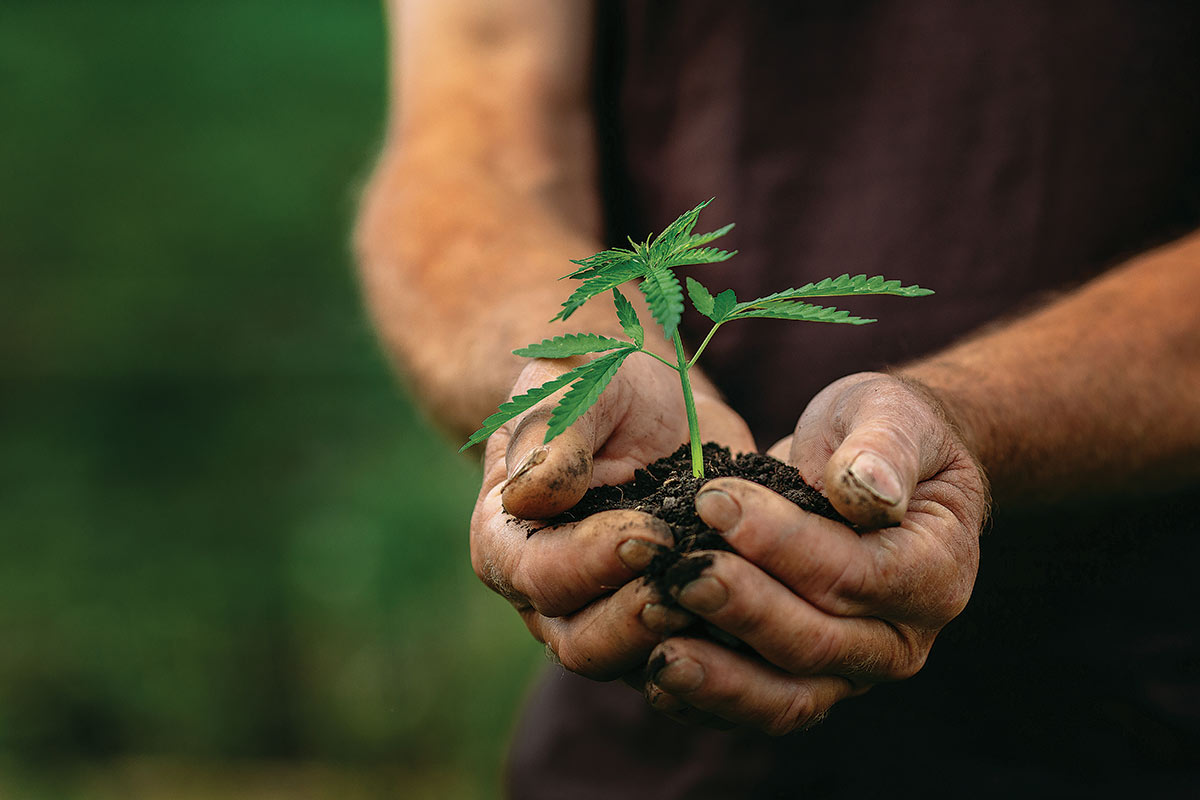
With many people now in favour of legalising the cultivation of marijuana in the country, policy makers have begun giving strong consideration to it. The fiscal budget 2080/81 has announced conducting a feasibility study of cannabis cultivation for medicinal purposes. Some years back, a group of lawmakers had registered a motion of urgent public importance in the parliament to legalise cannabis cultivation citing that the high value commodity had tremendous potential for cultivation across Nepal. They claimed that Nepali farmers could have a regular source of income through cannabis farming. Though the Cannabis Farming Regulation and Management Bill has been registered in the parliament it has not yet been discussed on the parliamentary floor. However, it has strongly sensitised policy makers about the possible benefits of the commodity.
Cannabis-tourism in Nepal: Popular destination for hippies
Historically, marijuana trade was open in Nepal and the country was popular for cannabis tourism in the 1960s. Kathmandu was a popular destination for hippies and marijuana traders then used to sell different varieties of marijuana by obtaining licence from the government.
Later, western countries started a debate to ban cannabis categorising it as an illegal drug. Subsequently, the United Nations banned cannabis, endorsing the resolution in 1961. The resolution considers cannabis as harmful for human health and a commodity of no medicinal importance. Thus, cannabis cultivation and associated businesses were restricted across the world.
However, Keshab Acharya, a senior economist, narrates a different story as to why cannabis was banned in Nepal. “Personnel enlisted in the United States Army used to consume excessive marijuana during the Vietnam War and cannabis was blamed for the huge losses the US had to suffer at that time,” he shares, adding that the US government then decided to restrict the cultivation and sale/export of marijuana. “The US government then approached Nepal and proposed to provide grants if Nepal considered restricting cultivation and trading of cannabis,” he says, adding, “Nepal, thus, agreed to restrict cannabis and enjoyed overwhelming grant support from the US government.”
Against this backdrop, cannabis cultivation remained banned for a long period of time. Again, in December 2020, the 53 member states of the Commission on Narcotic Drugs – the UN’s central drug policy-making body – voted to remove cannabis from that Schedule, where it had been placed for 59 years, and to which the strictest control measures apply, that generally discouraged its use for medical purposes. Since the Commission on Narcotic Drugs has opened the door to recognising the medicinal and therapeutic potential of marijuana, countries including Nepal have started adopting soft measures for the cultivation of cannabis and moving towards opening up restrictions.
However, it should be noted that the use of marijuana for non-medical and non-scientific purposes will continue to remain illegal. Nepal’s Narcotic Drugs (Control) Act of 1976 classifies cannabis/marijuana as a narcotic drug and restricts its cultivation, production, preparation, purchase, sale, distribution, export, import, trafficking, storage and consumption. To permit cultivation, the law must be amended.
Initiatives to legalise cannabis cultivation
Cannabis has remained banned in Nepal for 59 years due to the strict control measures adopted by the United Nations expect for medicinal purpose and scientific research. But the government has been taking some initiatives to gradually open up. Along with the registration of the bill, and the announcement made by the fiscal budget 2080/81 to conduct feasibility study of cannabis cultivation, the government has released a research paper titled ‘Legalisation of Cannabis Cultivation in Nepal: Potential and Challenges’ through the Policy Research Institute, a think tank run by the government.
The research paper has provided the Government of Nepal a few recommendations which are as follows:
- To amend the restrictive provisions of Narcotic Drugs (Control) Act, 1976.
- To define cannabis (and its varieties) based on the use.
- Scientific research should be conducted to develop informed knowledge regarding its medicinal values.
- Cannabis cultivation should be promoted for industrial use.
- Regulation, system and mechanism should be developed for trading and use of cannabis.
- Evidence-based ayurvedic medicines should be promoted.
- Establish well-facilitated rehabilitation centres.
- Demand and supply of cannabis should be monitored and analysed regularly.
Further, the bill registered in the parliament has envisioned the provision of licensing for the cultivation, transport, trading and export of cannabis. “It is appropriate to have a legal instrument to open up cannabis cultivation in Nepal for medicinal, scientific research, commercial and industrial use as well as for the economic upliftment of farmers and control of illegal production, trading and consumption,” states the preamble of the bill. These initiatives have provided the ground for the government to move forward towards legalising cannabis cultivation.
Competitive edge
Reportedly, high-quality cannabis can be cultivated in Nepal. Cannabis sativa and cannabis indica are the types most popular among users. Cannabis is categorised as male and female, with the flower of the female plant used for intoxication and the seed resulting from the pollination of male and female flowers. In the forests of Nepal, there is an equal distribution of male and female cannabis plants.
Traditionally, people used cannabis fibre to knit clothes and utilised the plant for medicinal purposes for both humans and pets. Additionally, cannabis is used recreationally to alleviate tiredness, fatigue and stress. Various studies have revealed that cannabis is less harmful than alcohol, tobacco, and other drugs. The entire cannabis plant has multiple uses: the root can reduce heavy metals in soil, absorb water, and serve medicinal purposes; the bark can be used to produce fibre for rope, clothes, thread, paper and other products; the stalk can be used for insulation material and biomass fuel; and the flower can be used in cosmetics, essential oils, psychoactive substances and medicines derived from chemical compounds like THC and CBD. Moreover, cannabis seeds are used to make pickles, food products such as chocolates, dietary fibre, baking additives, oil and cosmetics.
Industrial benefits
Cannabis also offers significant industrial benefits. Cannabis/hemp fibre is a major raw material for industrial products. The United Nations resolution does not restrict the cultivation and use of cannabis for industrial purposes. Blending hemp fibre with Himalayan nettle (allo) and other threads creates a high-quality raw material for producing clothes. Additionally, hemp fibre can be used to make floor coverings, table mats, purses, shoes and high-quality paper due to its high cellulose content.
According to a research paper by the Policy Research Institute, pulp-wood paper made from hemp can be recycled seven to eight times. A study carried out in the USA has shown that cannabis cultivated on 2.5 acres over 20 years produces four to 10 times more paper compared to other trees on the same area of land within the same period.
It is said that there is a huge demand for hemp fibre products. In terms of fibre production, hemp yields three times more fibre compared to cotton. Additionally, hemp can be used to produce construction materials (blocks) and automobile parts. Research by the Policy Research Institute indicates there are around 261 cottage, small, and medium enterprises related to hemp fibre. About 60% of the fibre is used by carpet factories, 15% by fabric industries, and 25% in cottage industries. According to fibre producers, Nepal has the potential to produce 2.8 million kg of fibre annually, but current production is only 38.4% of this potential.
Cannabis to cope with climate change
Cannabis is useful in coping with the challenges of climate change. Its carbon accumulation is higher compared to other plants. Additionally, cannabis can absorb water and prevent soil erosion and landslides. According to climate scientists, ‘Cannabis plantation is a good method of bioengineering alongside roads in the hills’. Cannabis can be cultivated in the mid-hills and Terai districts.
International practices
By early 2024, more than 40 countries have legalised the cultivation of cannabis, with some permitting it partially for medicinal purposes and scientific research. Canada and Uruguay have legalised cannabis cultivation for both medicinal and recreational use. Additionally, the Netherlands and Spain have decriminalised cannabis. The United States and India have adopted state-level strategies for regulation. In the US, 41 states have legalised cannabis for medicinal purposes, 10 states have completely banned it, 24 states have legalised it for both medicinal and recreational use, and six states have lifted bans for both purposes. Thailand is the first country in Asia to legalise cannabis for income generation and poverty alleviation among farmers. Considering it less harmful compared to other narcotic drugs, Thailand legalised cannabis in June 2022 to reduce the pressure of drug abusers in its jails.






